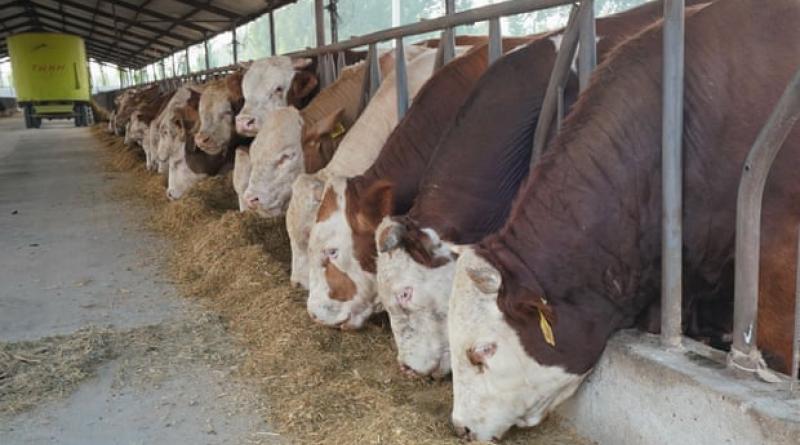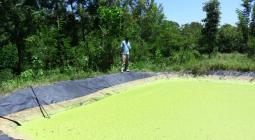Intensive farming worldwide threatens Paris climate accord, report says.

Rising emissions of nitrous oxide from farming are putting world on track to exceed 2C heating.
The spread of intensive farming is threatening to jeopardise the world’s chances of meeting the terms of the Paris agreement on the climate crisis, as the increasing use of artificial fertiliser and growing populations of livestock are raising the concentration of a key greenhouse gas to levels far beyond those seen naturally.
Nitrous oxide is given off by the overuse of artificial fertilisers, and by organic sources such as animal manure, and has a heating effect 300 times that of carbon dioxide. Levels of nitrous oxide in the atmosphere are 20% higher than in pre-industrial times, with most of that increase coming from farming.
Emissions of nitrous oxide are growing at a rate of 1.4% a year, outstripping the forecasts of the Intergovernmental Panel on Climate Change, and left untrammelled would put the world on track to exceed the 2C warming limit set under the Paris agreement, according to a paper published in the journal Nature.
Hanqin Tian, a professor at Auburn University in the US and lead author of the study, said: “The dominant driver of the increase comes from agriculture and the growing demand for food and feed for animals will further increase global nitrous oxide emissions. There is a conflict between the way we are feeding people, and stabilising the climate.”
Current rates of nitrous oxide emissions were consistent with 3C of global heating above pre-industrial levels, the researchers found.
Artificial fertilisers make up about two-thirds of the emissions of nitrous oxide from farming. The gas is released when microbes in the soil break down the excess fertiliser, particularly in boggy or over-wet ground where there is less oxygen.
Farmers can reduce the amount of nitrous oxide produced by simple measures such as targeting their fertiliser use more carefully, avoiding excess and using fertiliser only in the right weather conditions.
“We have the tools to reduce this problem,” said Parvadha Suntharalingam of the University of East Anglia, the co-author of the paper. “This is not insurmountable. But these practices need to be adopted more widely. We don’t have to sacrifice production, just make sure it is managed more carefully.”
Brazil, China and India are showing the highest growth in nitrous oxide emissions, owing to their rapid adoption of intensive livestock and grain farming, according to the Nature study. Emissions from the US have remained relatively stable, despite farm output growing.
Europe is the only region to have reduced nitrous oxide emissions, but most of these falls have come from requirements on industry, such as nylon factories. Emissions from farming have fallen more slowly, but measures to reduce the harm from fertilisers have now been adopted in some EU countries.
The gas also poses a threat to the ozone layer, which has been recovering in the last 30 years since the gases mainly responsible for its depletion – chlorofluorocarbons – were phased out under the 1987 Montreal protocol. Nitrous oxide breaks down in the stratosphere to react with ozone, and is now the leading source of ozone depletion.
Nitrogen fertilisers have been a boon to farmers, as nitrogen in the soil is essential for plant growth. However, synthetic fertilisers are now cheap and are easily misused and overused, and there are few restrictions on their deployment around the world.
About a third of the nitrous oxide emissions from farming are from livestock manure. These can also be reduced by the management of slurry in large facilities and by changes to how manure is used as a fertiliser, such as injecting slurry into the soil instead of spraying it.
Nitrogen run-off from farming also harms rivers and lakes, and ammonia – from fertilisers and manure – is a leading cause of air pollution.
Although nitrous oxide is one of the six greenhouse gases covered by the 1997 Kyoto protocol, it has received less attention in recent years as the focus has been on carbon dioxide emissions from the burning of fossil fuels.
Nitrous oxide is better known as laughing gas, after its experimental use by Humphry Davy at the turn of the 19th century. It has therapeutic uses but is sometimes misused. It also has some industrial uses as a propellant and is a byproduct of nylon manufacture, but can be extracted from flue gases at the factory.
7 October 2020
The Guardian




